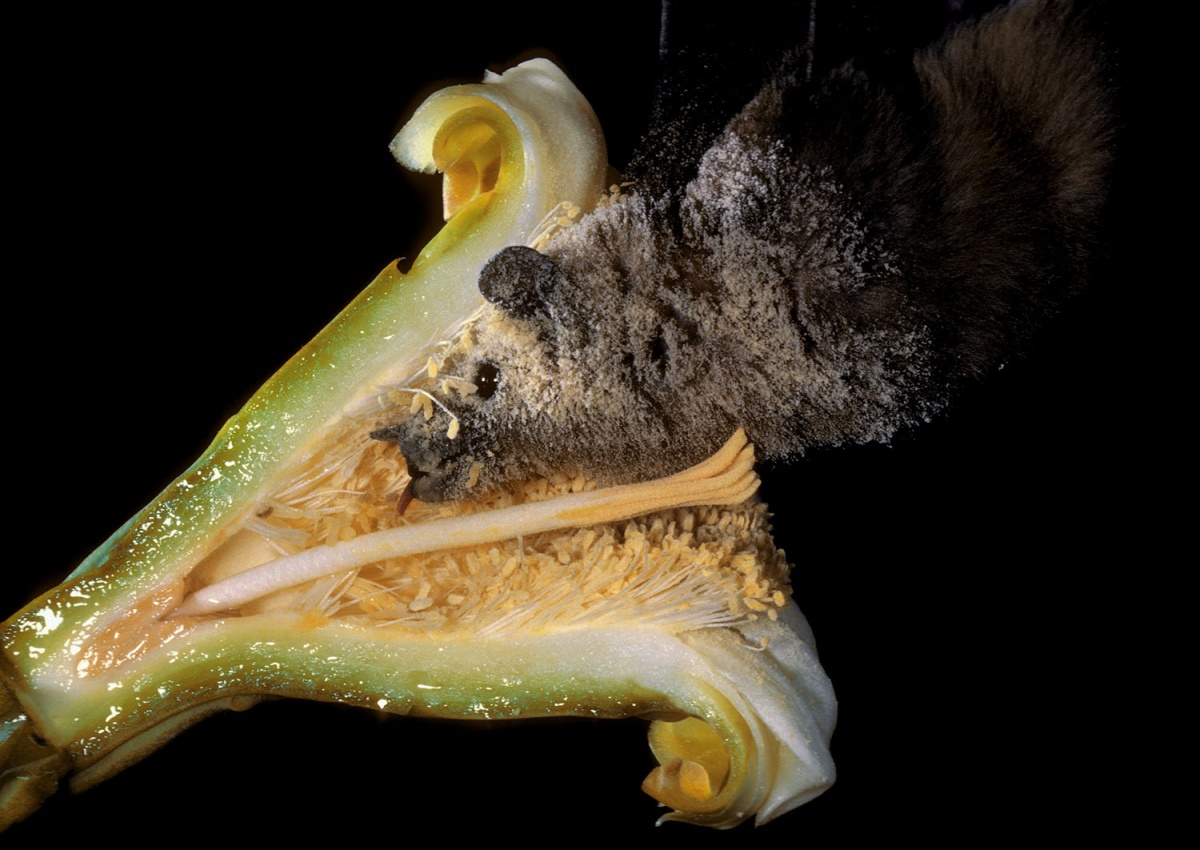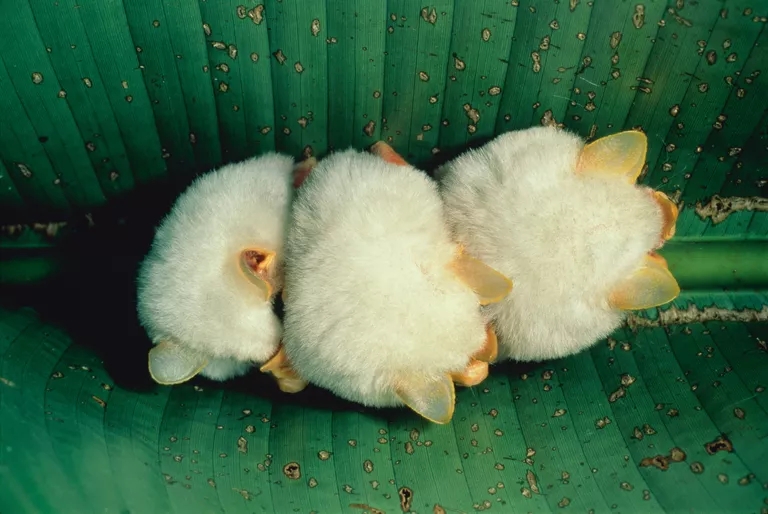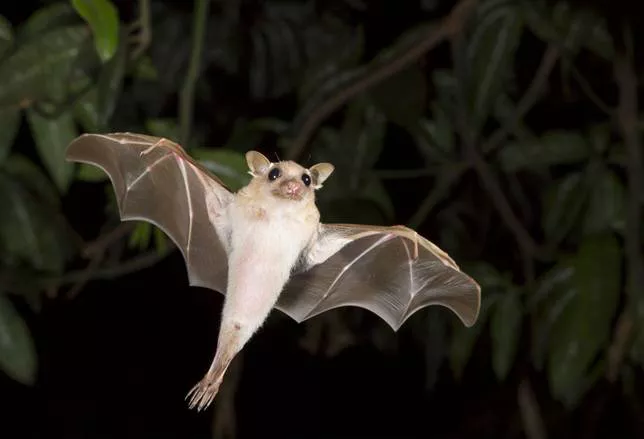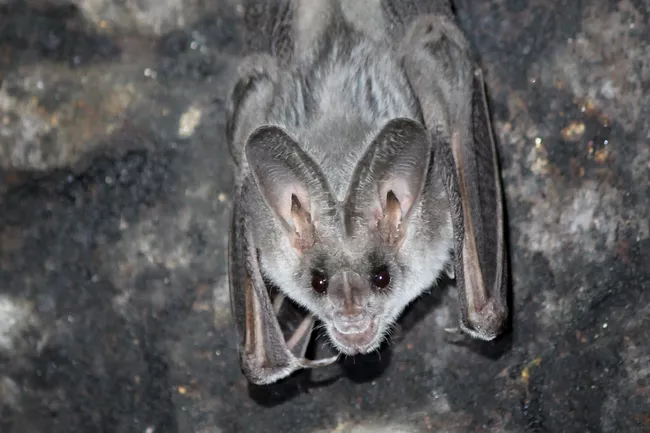Quick Facts
- Bats can live more than 30 years
- Can fly at speeds of 60 miles per hour
- Bats can eat up to 1,200 mosquitoes an hour
- Bats have few natural predators like Owls, hawks and snakes, but the biggest killer of bats is white-nose syndrome. this is a fungal growth that infected bats' muzzles and wingsbats during hibernation, when the bats reduce their metabolic rate and lower their body temperature to save energy over winter (White Nose Syndrome)
- Over 300 species of fruit depend on bats for (pollination). Bats help spread seeds for nuts, bananas, avocados, mangoes,figs and cacao. Without bats, we also wouldn’t have plants like agave or saguaro cactus.

Just like a hummingbird, this lesser long-nosed bat hovers at flowers and using its 3-inch-long tongue feeds on nectar.
Where to Find Them?
They can be found throughout the world except for certain oceanic islands, the Arctic and Antarctic. Most species inhabit the tropical and semitropical areas of the world, they are still common in the United States and are most numerous in the Southwest. Bats prefer hide in barns, attics, caves or abandoned mines, those shelters providing safety from predators, protection from fluctuations in weather, and seclusion for raising their young. From the Smithsonia The Art and Science of Bats
History
"Bats are mammals belonging to the order Chiroptera, a name of Greek origin meaning "hand-wing," which accurately describes the animal's most unusual anatomical feature. The order is divided into two suborders, the Megachiroptera, consisting of a single family, the flying foxes and their Old World fruit and flower eating relatives, and the Microchiroptera, composed of the rest of the bat families, some 17 in all. These families are further classified into about 180 genera and over 900 species; only rodents have a greater number of species. Even though the names imply otherwise, not all Megabats are larger than Microbats. Although it is true that certain species of flying foxes have wingspans of up to 5 feet, one member of the Megachiroptera, the flower-feeding Macroglosus, has a wingspan of only 10 inches. However, some of the Microchiroptera are very tiny; the smallest is probably the Philippine bamboo bat, Tylonycteris pachypus, its forearm measuring only 22mm. and weighing only 0.05 ounce. The largest Microbat is the tropical American false vampire, Vampyrumspectrum, with a wingspan of up to 40 inches." A quote from the Smithsonia The Art and Science of Bats
Photo Gallery






Photo Credits
- Lesser Long Nosed Bat in Quick Facks Section: According to fair use policy, I am using this image for academic purposes. This photo was taken by Merlin D. Tuttle for Bat Conservation International
- California Bat: Photo taken by Kristen Lalumiere for the Joshua Tree National Park
- Honduran White Bat: According to fair use policy, I am using this image for academic purposes. This photo was taken by Marko Konig for Getty Images.
- Peter's Dwarf Epauletted Fruit Bat: According to fair use policy, I am using this image for academic purposes. This photo was taken by Ivan Kuzmin for Shutterstock.
- Flying Brown Long Eared Bat: According to fair use policy, I am using this image for academic purposes. This photo was taken by Yves Adams for Getty Images.
- Greater False Vampire Bat: Photo taken by Aditya Joshi
- Greater Horseshoe Bat: According to fair use policy, I am using this image for academic purposes. This photo was taken by Marko Konig for Getty Images.